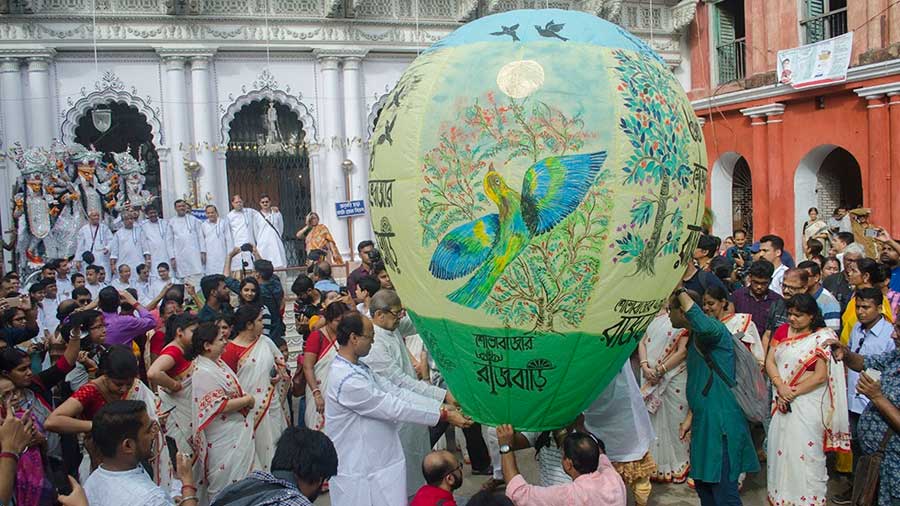Dashami marks the end of Durga Puja. On this day Ma Durga, along with her children, make their journey back home to the heavenly abode in Kailash. According to legend, the arrival of Durga is heralded to her husband by a pair of Neelkantha birds.
For centuries, the traditional households (bonedi baris) of Kolkata had followed the custom of releasing a Neelkantha just before the immersion of the idol. In fact, two birds were released. One was released when the idol was taken out of the house, while the second was released when the idol hit the water.
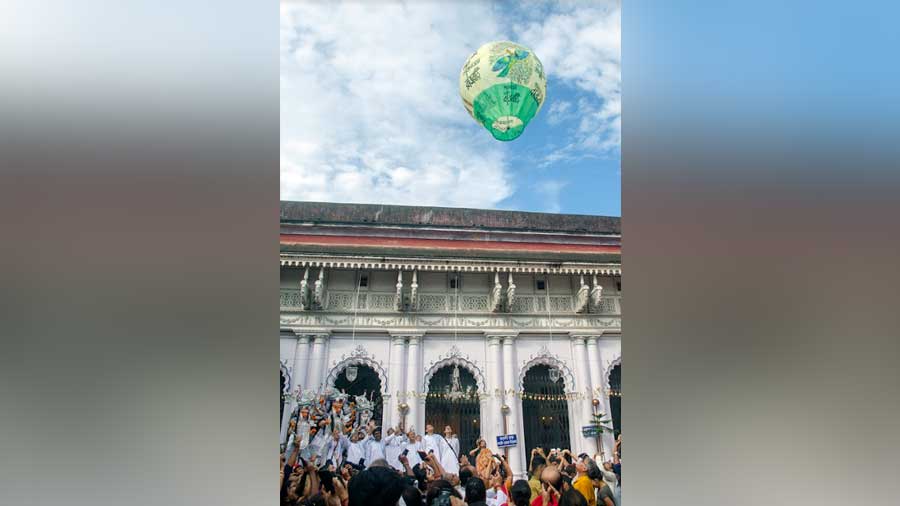
The Neelkantha 'phanush' heads for Kailash Rangan Datta
Neelkantha, literally meaning blue throat, represents Shiva. Shiva also had a blue throat after drinking the poison that was ejected during the churning of the oceans. Neelkanthas, or Indian Rollers (Coracias benghalensis), are widely distributed across west and south Asia. It is also the state bird of Odisha, Telangana and Karnataka. Contrary to its name, the little bird has a brown-coloured throat, but possesses at least half a dozen shades of blue in its crown, vent and tail.
Today, it falls under the list of protected birds and according to the Indian Wildlife Act, possession or trading of the bird can lead to a fine of Rs. 25,000, or imprisonment, or both. So, for a couple of decades, the practice of releasing the Neelkantha birds has been stopped.
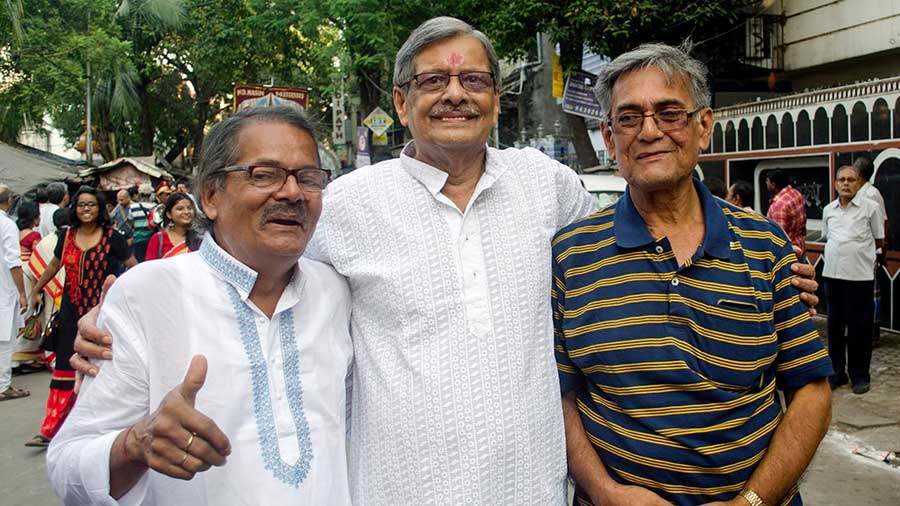
The trio behind the idea: (L–R) Prabir Krishna Deb, Swapan Krishna Deb and Ajoy Dutt Rangan Datta
To continue the tradition, bonedi baris have come up with innovations like replacing the actual birds with clay models. In 2018, Swapan Krishna Deb of Sovabazar Rajbari came up with a new idea of replacing the bird with a phanush (a paper-made hot-air balloon). In came Ajoy Dutt, a master phanush maker, along with Prabir Krishna Deb, an artist from the Sovabazar Rajbari. The phanush was painted with a brightly-coloured image of a Neelkantha, along with other decorations and write-ups.
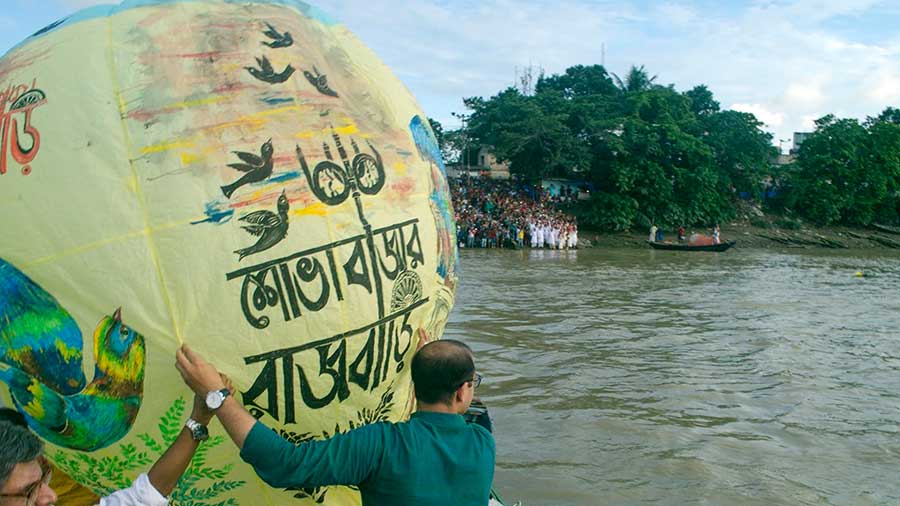
The second Neelkantha 'phanush' being released from a boat Rangan Datta
In 2018, two phanushes were released one from the gates of the Rajbari and the other from the Bagbazar Ghat. But without the presence of the Durga idol in the backdrop, it lacked the nostalgia of the original event.
Learning from their mistake, the trio of Swapan, Ajoy and Prabir decided to bring about some changes in 2019. They decided to launch the first phanush from the courtyard of the Sovabazar Rajbari and the second from a boat on the Hooghly River.
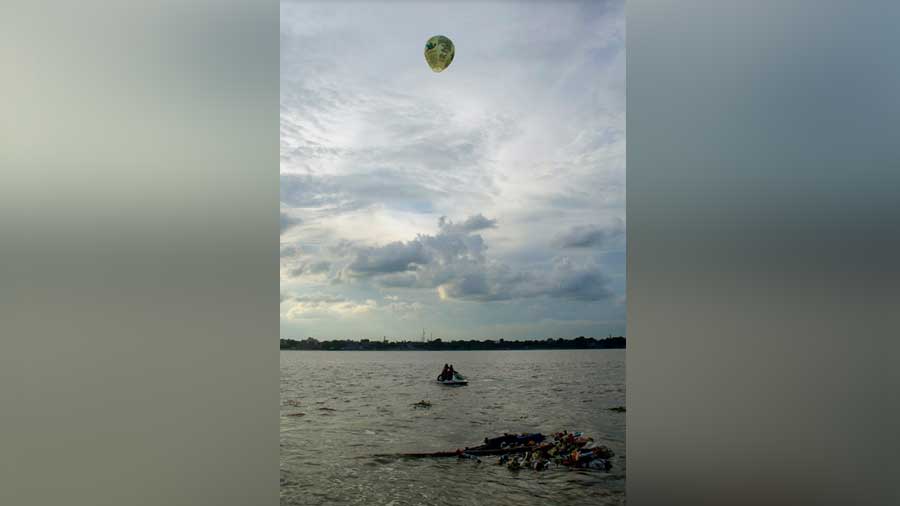
The 'phanush' soars Rangan Datta
It turned out to be a grand success, with the beautifully-painted phanush soaring in the sky with the Durga idol in the backdrop while women dressed in laal-paar sada saris, and men dressed in white panjabis and dhotis, cheered.
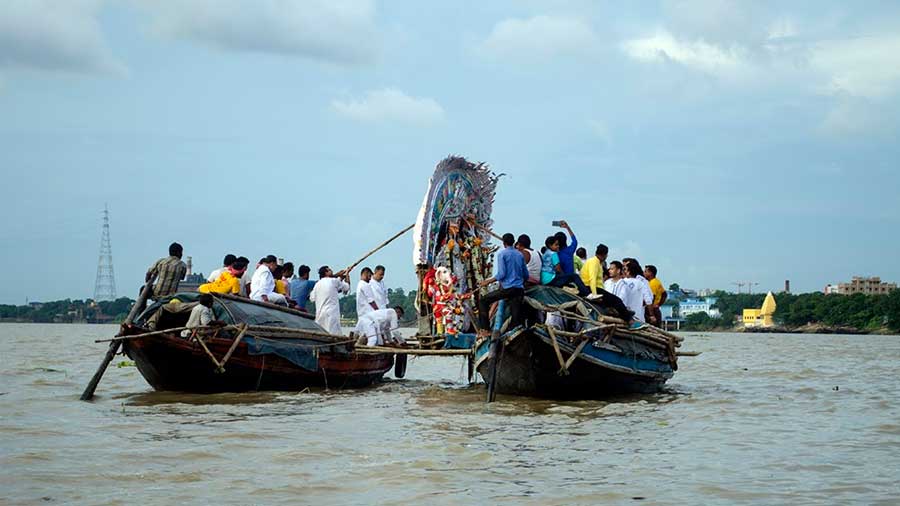
The Durga idol of Sovabazar Rajbari being carried between two boats, about to be immersed Rangan Datta
At the Bagbazar Ghat, the idol is loaded onto a bamboo frame fitted between two boats. The boats make their way to the centre of the river where the bamboo is cut off dropping the idol into the water. Ajoy Dutt, along with his team, was in another boat and released the phanush at the moment the idol hit the waters. As the remains of the idol floated in the water, the phanush quickly gained height and headed for Kailash, the abode of Lord Shiva, to deliver the message of his wife’s arrival!
Rangan Datta is a freelance travel writer and photographer. He lives for the thrill of exploring off-beat places. His wanderlust was ignited at a very young age by an ordinary two-day trip to Puri. When he is not travelling, he is teaching mathematics and computer applications.
